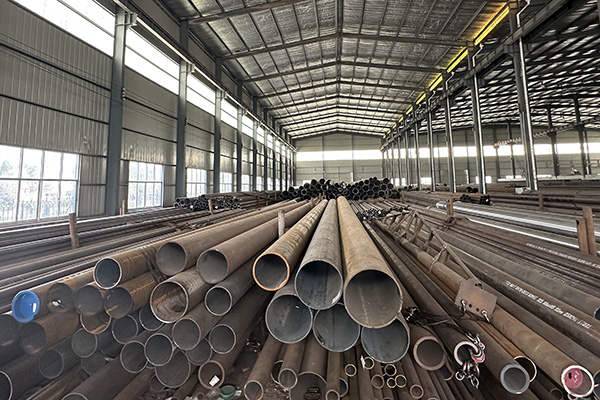

Features and Applications of Heat-Resistant Alloy Steel Pipes
Heat-resistant alloy steel pipes are specifically designed to withstand elevated temperatures, mechanical stress, and corrosive environments over long periods. These pipes are commonly used in high-temperature industrial applications such as power generation, petrochemical processing, and thermal equipment. Their performance at elevated temperatures is achieved through specific alloying elements and rigorous heat treatment processes.
Key Features of Heat-Resistant Alloy Steel Pipes
1. Excellent Thermal Stability
Heat-resistant alloy steel pipes retain their mechanical strength and dimensional stability at high temperatures, typically ranging from 500°C to over 1000°C, depending on the grade. They resist creep deformation, which is the gradual elongation of a material under constant stress and heat.
2. High Oxidation and Corrosion Resistance
These pipes form stable oxide layers that protect the surface from further oxidation. The addition of chromium, molybdenum, and other alloying elements enhances resistance to scaling, carburization, sulfidation, and other high-temperature corrosion mechanisms.
3. Good Mechanical Properties at Elevated Temperatures
They maintain high tensile strength, fatigue resistance, and impact toughness even when exposed to thermal cycling and fluctuating mechanical loads. This makes them ideal for structural integrity under severe operating conditions.
4. Resistance to Thermal Fatigue and Thermal Shock
Heat-resistant alloys are designed to withstand rapid temperature changes without cracking or spalling. This property is critical in systems where sudden heating and cooling cycles are common.
5. Long Service Life and Reliability
Due to their durable nature and resistance to thermal degradation, these pipes often require less frequent maintenance and replacement, contributing to reduced downtime and operational costs.
Common Applications of Heat-Resistant Alloy Steel Pipes
1. Power Generation Industry
Used in superheaters, reheaters, steam pipelines, and boiler tubes in thermal power plants. Grades like ASTM A213 T91 and T22 are standard for high-pressure and high-temperature steam systems.
2. Petrochemical and Refining Plants
Employed in furnace tubes, reformer tubes, and heat exchanger components where extreme temperatures and chemical exposure are present. Materials such as Cr-Mo steel (e.g., ASTM A335 P11, P22) are widely used.
3. Oil and Gas Industry
Utilized in steam injection lines, flare stacks, and gas processing systems where heat resistance and corrosion resistance are required simultaneously.
4. Metallurgical and Heat Treatment Equipment
Applied in muffle tubes, retorts, and annealing furnaces where pipes are exposed to cyclic thermal loads and aggressive environments.
5. Aerospace and Defense
High-grade heat-resistant pipes are used in exhaust systems, engine components, and heat shields in aerospace engineering due to their performance under extreme thermal conditions.
6. Chemical Industry
Used in reactors and piping systems that handle high-temperature chemical reactions, especially where resistance to hydrogen corrosion and oxidation is essential.
Conclusion
Heat-resistant alloy steel pipes offer a balance of strength, durability, and corrosion resistance under high-temperature environments. Their performance is critical in applications where conventional carbon steel would rapidly degrade or fail. Selecting the appropriate alloy grade based on specific operating conditions is essential to ensuring safety, efficiency, and longevity.
References:
ASTM A335 – Standard Specification for Seamless Ferritic Alloy-Steel Pipe for High-Temperature Service
ASTM A213 – Standard Specification for Seamless Ferritic and Austenitic Alloy-Steel Boiler, Superheater, and Heat-Exchanger Tubes
ASME Boiler and Pressure Vessel Code (BPVC) Section II, Part D
ASM Handbook, Volume 1 – Properties and Selection: Irons, Steels, and High-Performance Alloys





